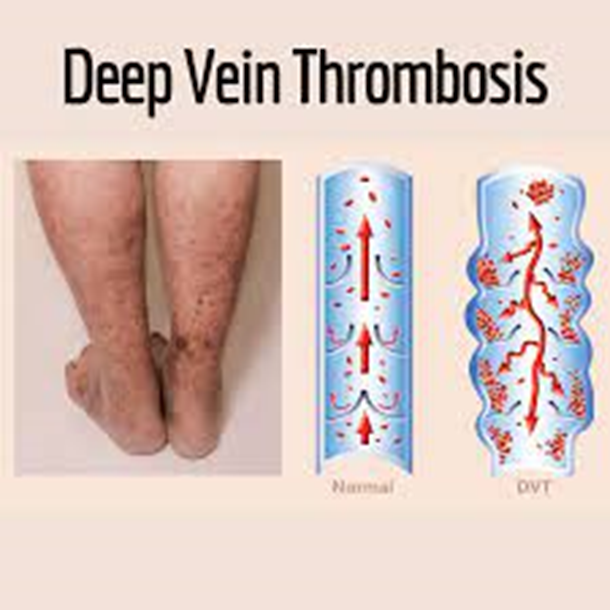A charge nurse is making room for new admissions following a community disaster. Which of the following clients should the nurse recommend for discharge?
A client who has a deep-vein thrombosis and an INR of 2.0
A client who is receiving chemotherapy and has tumor lysis syndrome
A client who has a new onset of left-sided weakness
A client who has angina and a troponin level of 3 ng/mL
The Correct Answer is A
Choice A reason: This is the correct choice because this client has the least urgent and most stable condition. A deep-vein thrombosis is a blood clot that forms in a vein, usually in the leg. An INR of 2.0 indicates that the client's blood is within the therapeutic range for anticoagulation therapy, which prevents the clot from growing or breaking off. The nurse should ensure that the client has a prescription for oral anticoagulants, compression stockings, and follow-up appointments before discharging them.
Choice B reason: This is not the correct choice because this client has a serious and potentially life-threatening condition. Tumor lysis syndrome is a complication of chemotherapy that occurs when cancer cells break down rapidly and release their contents into the bloodstream. This can cause electrolyte imbalances, kidney damage, and cardiac arrhythmias. The nurse should monitor the client's vital signs, laboratory values, urine output, and fluid balance, and administer medications and interventions as prescribed.
Choice C reason: This is not the correct choice because this client has a new and acute condition. A new onset of left-sided weakness could indicate a stroke, which is a medical emergency that requires immediate diagnosis and treatment. The nurse should perform a neurological assessment, check the client's blood pressure and blood glucose levels, and activate the stroke protocol.
Choice D reason: This is not the correct choice because this client has a severe and unstable condition. Angina is chest pain that occurs when the heart muscle does not get enough oxygen-rich blood. A troponin level of 3 ng/mL indicates that the client has a high level of cardiac enzymes in the blood, which suggests a heart attack or myocardial infarction. The nurse should administer oxygen, nitroglycerin, aspirin, and morphine as prescribed, and prepare the client for further diagnostic tests and interventions.

Nursing Test Bank
Naxlex Comprehensive Predictor Exams
Related Questions
Correct Answer is A
Explanation
Choice A reason: This statement is correct, as hospice care provides comprehensive and compassionate care for clients who have a life expectancy of six months or less. Hospice care involves a team of health care professionals, such as physicians, nurses, social workers, chaplains, and volunteers, who address the physical, emotional, social, and spiritual needs of the client and their family.
Choice B reason: This statement is incorrect, as hospice care is not intended for clients at various stages of chronic illness. Hospice care is only for clients who are terminally ill and have decided to forego curative or aggressive treatments.
Choice C reason: This statement is incorrect, as hospice care does not prolong the life expectancy of clients who are terminally ill. Hospice care focuses on improving the quality of life and comfort of the client, not on extending their life span.
Choice D reason: This statement is incorrect, as hospital access is still available for clients who are in hospice care. Hospice care can be provided in various settings, such as the client's home, a hospice facility, a nursing home, or a hospital. Clients who are in hospice care can still be admitted to the hospital if they need acute care or symptom management.
Correct Answer is B
Explanation
Choice A reason: Allowing the AP to document the vital signs prior to logging out is not a correct action, as it violates the principles of confidentiality and accountability. The nurse should not share their login credentials or allow anyone else to use their electronic record.
Choice B reason: Logging out so the AP can log in to document the vital signs is the correct action, as it ensures that the documentation is accurate, timely, and secure. The nurse should log out of the electronic record after completing their charting and allow the AP to log in using their own credentials.
Choice C reason: Offering to chart the vital signs for the AP is not a correct action, as it delays the documentation and increases the risk of errors. The nurse should not chart the vital signs for the AP, as they are not the ones who obtained them.
Choice D reason: Recommending the AP come back later when the record is available is not a correct action, as it also delays the documentation and reduces the availability of the electronic record. The nurse should not make the AP wait for the record, as it may affect the continuity of care.
Whether you are a student looking to ace your exams or a practicing nurse seeking to enhance your expertise , our nursing education contents will empower you with the confidence and competence to make a difference in the lives of patients and become a respected leader in the healthcare field.
Visit Naxlex, invest in your future and unlock endless possibilities with our unparalleled nursing education contents today
Report Wrong Answer on the Current Question
Do you disagree with the answer? If yes, what is your expected answer? Explain.
Kindly be descriptive with the issue you are facing.
